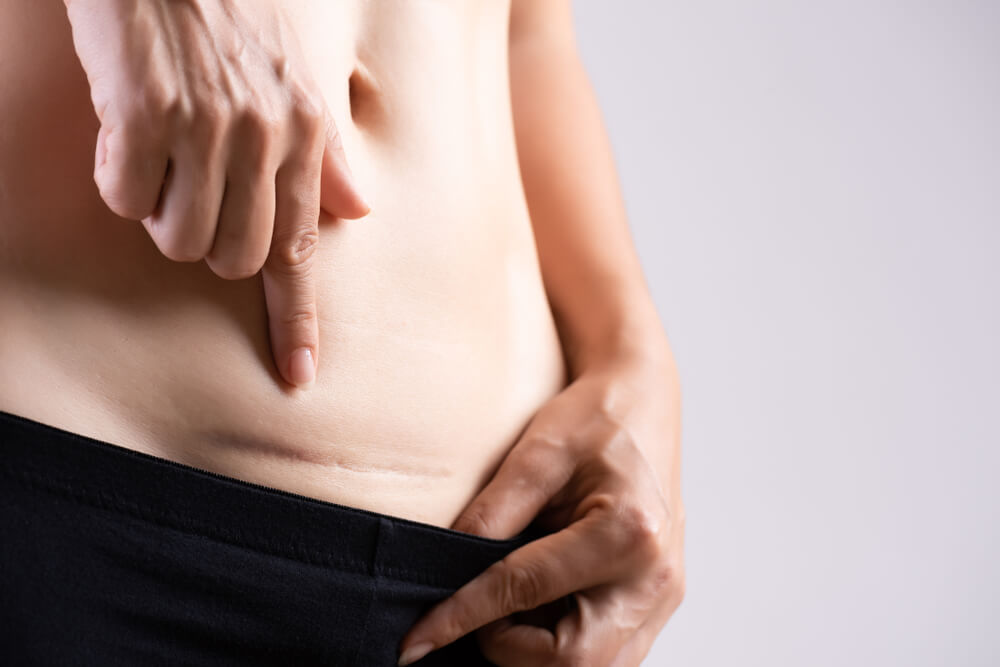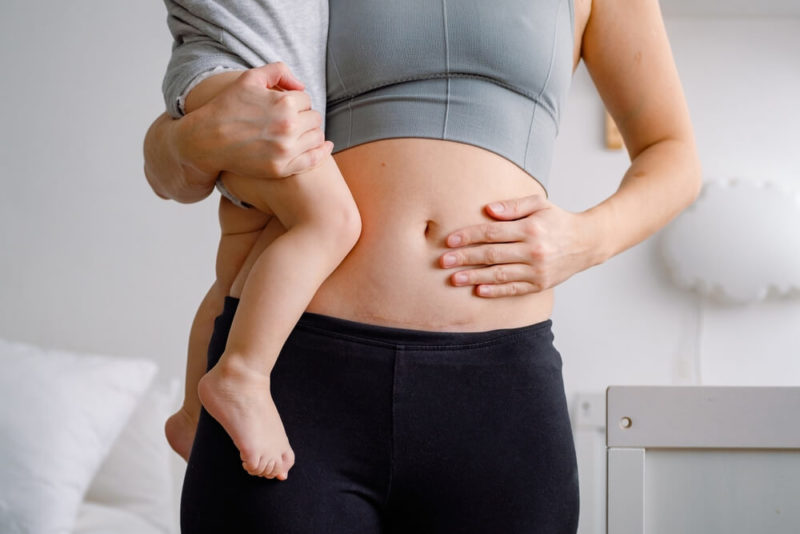C-section scars are a form of cosmetic surgery, and as such they come with the same risks, benefits and side effects that any other form of cosmetic surgery does. C-sections are becoming increasingly popular in many countries around the world, because it is seen to be a safer way to give birth.
C-section scars can cause both physical and emotional scarring. Cosmetic surgery can help to minimize the appearance of these scars, but it is important to be aware of the risks involved.
Types of Incisions
The type of incision used will affect the type of scar that is left behind. The most common type of incision used for a c-section is called a Pfannenstiel incision. This type of incision is made in the skin above the pubic bone, and it curves up towards the belly button. This type of incision is often used because it leaves a thin, horizontal scar that is easy to conceal.
Another type of incision that can be used for a c-section is called a low transverse incision. This type of incision is made in the skin below the navel, and it curves out towards the side of the body. This type of incision leaves a vertical scar that can be more difficult to conceal.
Different types of incisions will leave different types of c section stitches.
Types of C Section Scars
There are two main types of c-section scars. The first is a horizontal scar, which is located just above the pubic bone. This is the most common type of c-section scar. The second type is a vertical scar, which runs down the middle of the stomach. This type of scar is less common & can be more difficult to heal.
What are the types of c section stitches? You could have either the classical cut or the bikini cut. The latter one heals faster and doesn’t cause as much pain as the former one after the surgery.
What Are The Physical Risks?

C section scars can cause physical problems such as pain, inflammation and infection. They can also limit movement and flexibility, and may interfere with breastfeeding.
When it comes to pain, everyone experiences it differently. Some people find that their c-section scar hurts a lot, while others experience only minor discomfort. The pain can be caused by inflammation, nerve damage or the formation of scar tissue.
In addition to pain, c-section scars can also cause inflammation. This is caused by the body’s natural response to surgery, and can lead to swelling, redness and warmth in the affected area.
Infection is another possible complication of c-section scars. This can cause fever, chills, redness, pain and drainage from the wound. It is important to keep an eye on your scar and see a specialist such as Dr. Miranda in Miami if you think you might have an infection.
Scar tissue can also form around c-section scars. This is called adhesions, and it can cause pain, inflammation and limited movement.
Managing movement with c section scars can be hard because it can limit how much you can move your abdomen. This can make it difficult to do things like bend over or lift heavy objects. It is important to listen to your body and not push yourself too hard, as this could cause more pain or damage.
C-section scars can also interfere with breastfeeding. The scar tissue can block the milk ducts, making it difficult for the baby to nurse. Mastitis, a condition that causes breast infection, is also more common in women who have c-section scars.
It’s essential to approach your scar carefully and make sure you know to take care of it. For instance, you should know how to keep c section incision dry when overweight.
Are There Any Emotional Risks?
C-section scars can cause emotional scarring as well as physical scarring. This is because they are a reminder of a traumatic experience. For some women, this can be a difficult thing to deal with.
C-section scars can also cause body image issues. Some women feel self-conscious about their scars and may feel like they are not as beautiful as they used to be. This can lead to low self-esteem and depression.
If you experience any of these feelings because of your types of c section stitches, it is important to schedule an obstetrics appointment to voice your concerns. They can help you manage any pain or other physical complications you may be experiencing. They can also refer you to a therapist or support group if you are having difficulty dealing with the emotional aspects of your scar.
How Long Does Healing Take?
The amount of time it takes for a c-section scar to heal varies from person to person. Some people take a few weeks, while others take months. It is important to be patient and let your body heal naturally. Try to resist the urge to scratch the scar and instead, ask yourself why does my c section scar itch. Pushing yourself too hard can slow down the healing process or even cause damage.
There are a few things you can do to help you get your healed c section scar faster. These include:
- Applying pressure to the wound: This helps to promote blood flow and prevent the formation of scar tissue.
- Using silicone gel: This can help to reduce redness, swelling and pain.
- Getting massages: This can help to break down scar tissue and improve circulation.
- Eating healthy: A healthy diet can help your body heal faster. Your diet should include plenty of fruits, vegetables and whole grains.
- Exercising: Moderate exercise can help promote healing. Be sure to consult with your doctor before starting any new exercise program.
- Getting plenty of rest: Healing takes a lot of energy, so make sure to get plenty of rest.
- Using cold compresses: Compresses help with swelling. You should apply them for 10-15 minutes at a time, several times a day for a healed c section scar.
- Taking medication if necessary: If you are experiencing pain, inflammation or other complications, your doctor may prescribe medication to help you manage it.
What Are Some General Care Tips?

Aside from doing things to help minimize the pain and promote healing, you should take care of your scars in various ways. Make sure to work out how to keep c section incision dry when overweight as well.
- Wear loose clothing: This will help to avoid putting pressure on the wound. Additionally, it’s important to choose the right fabric. Cotton is a good choice as it’s soft and breathable.
- Keep the wound clean and dry: How to keep c section incision dry when overweight? You should clean the wound with soap and water every day to prevent infection. You should also put a thin layer of petroleum jelly on the scar to help keep it moist. If you’ve often wondered why does my c section scar itch, this will help to reduce itching and discomfort.
- Avoid sun exposure: Sun exposure can cause scars to become darker and more noticeable. If you must go outside, be sure to use sunscreen and cover the scar with clothing.
- Be gentle with the scar: Avoid putting pressure on or picking at the scar. This can cause the wound to open up and become infected.
- Do not pick at the wound: Why does my c section scar itch? Picking at the wound can cause it to become infected or worse. If the wound itches, try to resist the urge to scratch it. Instead, apply a cool compress or cream to ensure nothing is wrong with the healed c section scar.
Conclusion
C-section scars can be a source of physical and emotional pain for many women. However, there are things you can do to help minimize the pain and promote healing. With time and care, your scar will eventually fade and become less noticeable.
Still have questions about your scars? Book a consultation appointment at (305) 665-1133 or simply call us to address your concerns.




